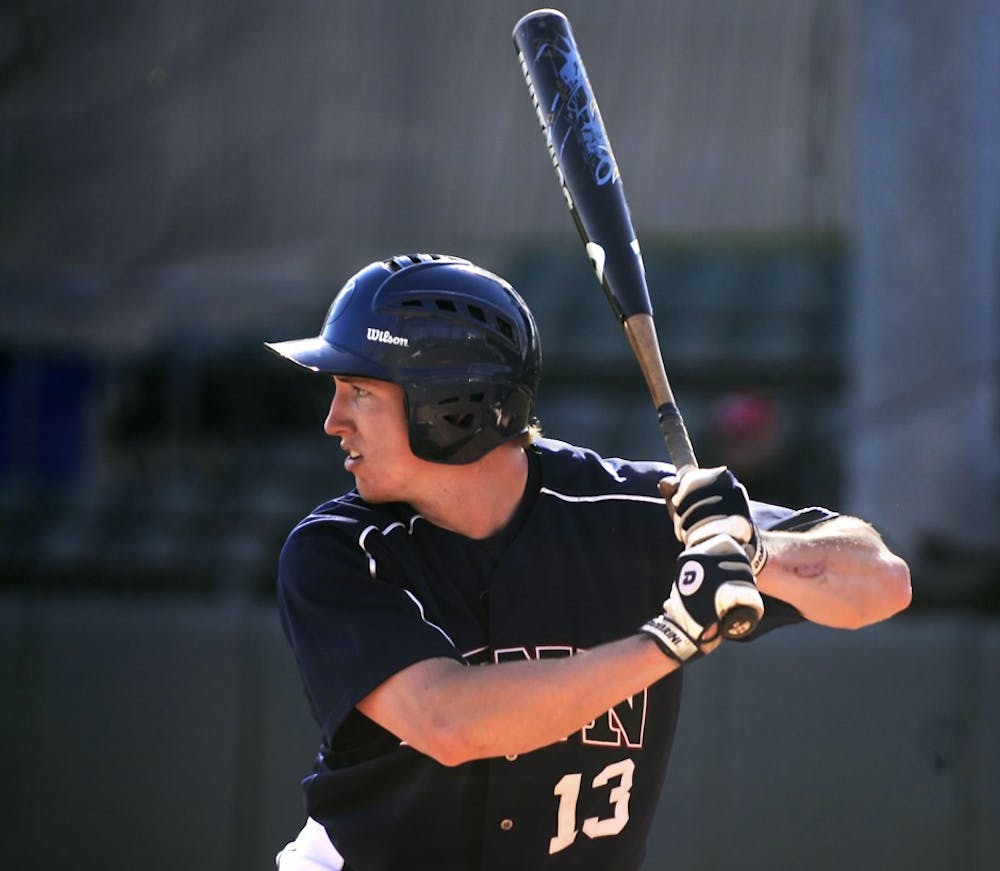Travel to a football stadium or basketball court, and you won’t be coming across any 150-yard fields or 12-foot rims.
Baseball, on the other hand, has always been a different story.
Each ballpark has distinct dimensions, personality, structure and setting and that can have a major effect on how the game is played. Ivy League stadiums are no exception.
As a result, baseball box scores and statistics constantly need to be taken with a grain of salt.
Take, for example, Penn’s four-game slugfest with Cornell last weekend at Meiklejohn Stadium. The Big Red committed 14 total errors and the average number of runs scored by the winning team was 12.5.
But back in Ithaca, N.Y., the Hoy Field surface has been layered with turf since 2007. It’s one of three Ivy stadiums to have turf, along with Dartmouth’s Red Rolfe Field and Columbia’s Robertson Field.
According to Penn coach John Cole, those three teams have improved their defense at home but they “struggle, usually, coming back on dirt fields.”
Cornell pitcher Corey Pappel was the recipient of last Saturday’s loss. His 2.70 earned run average skyrocketed thanks to six earned runs allowed in 3.1 innings.
“It’s great to pitch on [turf], because ground balls always behave like they should,” Pappel wrote in an e-mail. “It’s also a breeding ground for bad habits.”
Additionally, Hoy Field is “probably the most generous pitchers’ park” in the Ivies, Pappel said, so the transition to the notoriously hitter-friendly Meiklejohn led to a pitching disaster and an offensive explosion.
Junior catcher Will Davis has reaped the benefits of playing so many games in a home-run haven. As one of the Quakers’ few powerful lefties, he can take advantage of the 345-foot right field porch. Wednesday against Lehigh, he hit his league-leading 11th round-tripper — eight of which have come at home.
“I’ve mastered the 347-foot shot to right-center,” Davis told The Daily Pennsylvanian afterward. “I’ve been snaking some home runs.”
But Ivy sluggers have other opportunities around the Northeast to “snake” some dingers. Cole, Davis and senior pitcher Todd Roth noted Robertson Field and Brown’s Murray Stadium as the other hitters’ parks.
Up north in Providence, R.I., the elements often contribute to the hitter-friendly environment.
“The wind always blows out at Brown,” Cole said. “If the wind is blowing in, you will definitely play more small ball … [but] if the wind’s blowing out, we’ll take more chances to drive balls in the air.”
Roth has experienced Brown’s wind factor first-hand.
“I threw a ball up and away to Devin Thomas [freshman year] and he hit what should have been a pop-up,” he recalled. “It just kept carrying and carrying and carrying. It went out of the park and I was like, ‘wow, that should never happen.’”
Meanwhile in New York, Robertson is “sandwiched behind a river,” Davis said, so the outfield fence is around 350 feet from home plate all the way around, including in centerfield — a very short distance that is both beloved and hated at the same time.
“If you manage to have a good day popping balls out of there, you love the field,” Davis said. “But if we end up losing because Columbia’s getting cheap home runs off of us, it’s a tough one to take.”
Life isn’t so easy for hitters at Cornell, Dartmouth and Princeton — not coincidently the three lowest-scoring Ivy teams. Hoy Field is 405 feet to centerfield with the deepest alleys in the league, while the Tigers’ Clarke Field, where Penn will play a pair of doubleheaders this weekend, has the most foul territory.
Despite its spacious proportions, hitters and pitchers alike agreed that Clarke is one of the better complexes in the league, with, as Pappel wrote, its “tree-lined outfield and hilled surroundings.”
Unsurprisingly, Davis and Roth named Meiklejohn as their favorite, but Davis added that Dartmouth’s Red Rolfe Field is one of the nicer ballparks.
Roth has had his most interesting experiences at Cornell, where structure collides with the ever-present factor during any away game — the crowd.
“Their ballpark is right alongside a parking garage down the third-base line,” he said. “They’ve got a lot of hecklers up there … and it’s funny because their voice just sounds so loud because of where they’re at and it echoes out onto the field. You can hear everything they say — it’s kind of intense but it makes it fun to play there.”
Such is life on the road in Ivy League baseball.



